What is Business Process Management? Strategies, Templates, & Examples

Sorry, there were no results found for “”
Sorry, there were no results found for “”
Sorry, there were no results found for “”
Here’s the thing: At ClickUp, we’re process people. And you should be too! Do you know why?
Well-defined business processes assist organizations in identifying how they operate. And they also help leaders understand how to run companies more efficiently.
But the greatest beauty of business processes lies in their ability to leverage businesses. After all, what successful business has an inefficient functioning? That’s right! None.
Then all you have to do is learn the ropes of process management—business process management (BPM), to be specific. And that’s why we put together this article for you.
You’ll learn what business process management is, why it’s important, and what it entails. And you’ll love the templates and examples we compiled for you and our suggestions for optimizing your business processes with the right tools.
Let’s start right away so you can speed up your business processes as sons as possible!

Process management analyzes existing processes within an organization, defines and describes new ones, and controls the execution of both existing and new processes to ensure they’re completed as described.
And the ultimate goal of doing all the above is improving—or optimizing—the business processes. Now, what’s a business process exactly?
A business process is a sequence of tasks (or steps) performed by one or more roles to produce output and thus achieve a goal. And if, for instance, the goal is reaching a milestone, then a business process is a definition of how to get from one milestone to the next.
You can easily conclude that business process management is an expression of teamwork as it may involve multiple people. And it’s their work together as a team or organization that makes the business process come to life.
If you’re wondering about what’s missing or what could go differently in the process, we’re proud of you! Because you’re tuning into the spirit of business process management.
Bonus: Process Mapping Tools
If you take work efficiency seriously—like we believe you do—you must be into business process management. That’s how you’ll hit your business goals smoothly, faster, and with fewer resources.
Without proper business process management, not everyone knows who was responsible for which tasks in a project. This only gets more challenging when additional teams are added to the equation.
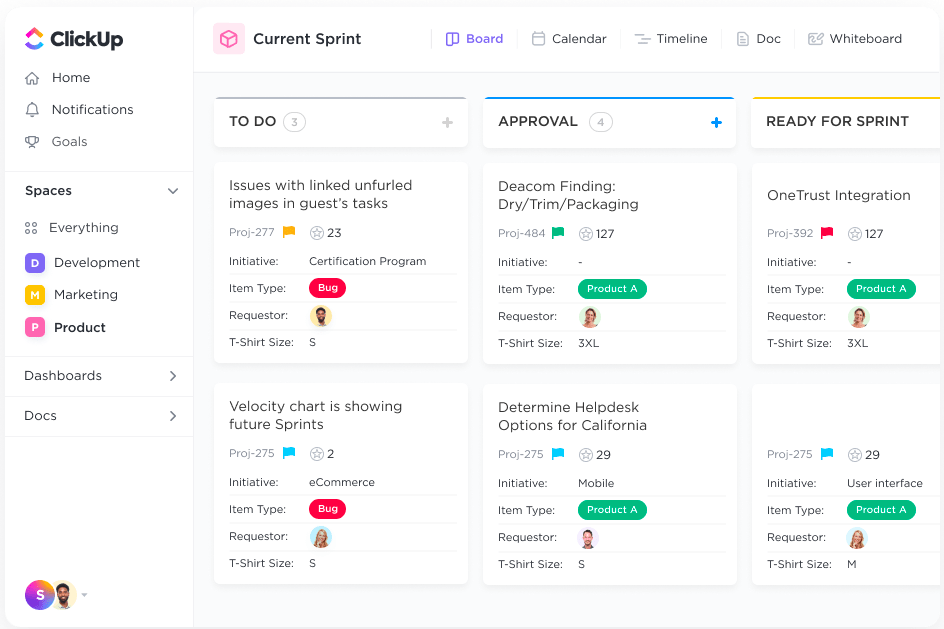
Teams absolutely need visibility into the process at all stages when multiple groups are involved. And process management ties in all the moving parts of an organization to deliver value to project stakeholders and, ultimately, the business.
Process management processes that waste unnecessary time or resources are inefficient. And you must either make them efficient or eliminate them.
But here’s the catch: Identifying and improving inefficient processes is challenging. Because you know that when a process gets ingrained in an organization, changing it triggers resistance, to say the least. Unfortunately, you have to continuously improve the processes in your company anyway.
To do that, follow the business process management lifecycle:
In this phase, you must start by analyzing the company’s business strategy. That’s the direction your organization wants to take so it accomplishes its goals in the future. And this knowledge will guide the entire business process management lifecycle—it’s its cornerstone.
To get a process management plan in place, you first need to:
Then, depending on the insights these steps give you, you have a few options for what to do next. You can either:
RINSE AND REPEAT
Pro tip: Make sure you repeat the process planning stage at least once a year because new processes might emerge. This way you’re always up to date on your business process.
During this phase, you must design and represent business processes, keeping in mind that they orchestrate the actions of different roles, systems (not necessarily always technological), information, and objects (depending on your business).
And by designing we mean conceptualizing each process and literally drawing a workflow (or set of workflows) for it. Visually, those are diagrams or flowcharts, which can be built into advanced project management tools like ClickUp!
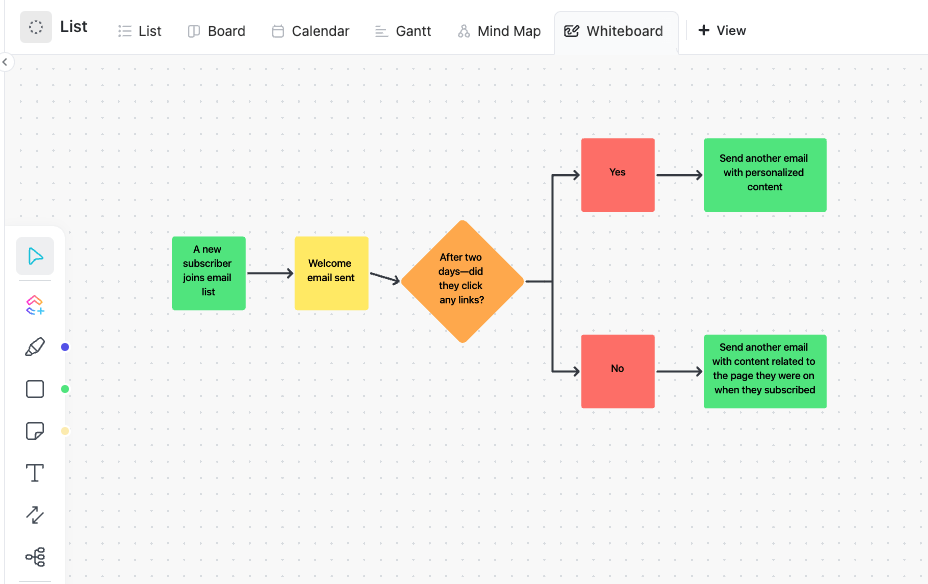
If you read or hear about workflow management, that’s because business processes are represented with workflows (sometimes, many workflows). But business process management is more than creating and optimizing workflows, which is the focus of workflow management.
Also, beware that often, process management professionals create workflow diagrams with the Business Process Model and Notation (BPMN).
Check out our finest selection of workflow examples!
To implement the business processes you previously designed, you must use a BPM tool. And here are the two gold steps we recommend you follow when executing the processes with the tool you choose:
This cautious approach to process execution will minimize the impact of possible design flaws.
Are your business processes running? Okay. Then you must analyze them to see how exactly they’re running.
Process monitoring helps you identify bottlenecks, repetitive tasks, and other problems you must fix. On a deeper level, monitoring a current process means thoroughly examining each of its parts. Automating business processes cuts out the manual work of these repetitive tasks.

The goal is to pinpoint which parts are working well and which ones need improvement (plus the kind of improvement they need). Analyzing your customer or client onboarding process is an effective way to determine how its execution might be affecting your customer engagement levels.
And you might get signs that something is wrong with the process by mining event log data from the information systems involved in onboarding. That’d be a data-driven approach to comprehending process performance.
And it could enable you to automatically discover new processes from process analytics data. But how do you actually analyze processes? With a business process monitoring tool.
Just like a blood test report, such a tool assesses the health of your processes. For instance, it might evaluate customer satisfaction, cycle time, revenue, productivity, and many other metrics.
However, like a health check-up, you must repeat it every few weeks or months. Otherwise, you might only realize your processes have inefficiencies until it’s too late to avoid process failures (with all the associated costs and downsides).
Ensure business process automation tools are used to cut down the time it takes to do your day-to-day work. Your entire process management plan needs attention in specific spaces—more so than others.
The optimization stage—or control stage—is about fine-tuning the business process needed for improvement. That’s how you keep them efficient and achieve your company’s business goals and your overall process management plan.
Some examples of process management optimization might include:
And don’t forget to monitor the processes that you optimized! After all, this is a cycle.
Let’s go back to the idea that you can optimize business processes by streamlining workflows. And that you streamline workflows with automation.
Well, process management templates are one of the foundations of workflow automation. And the three templates below are those we recommend you take a look at when you first get into workflow management.
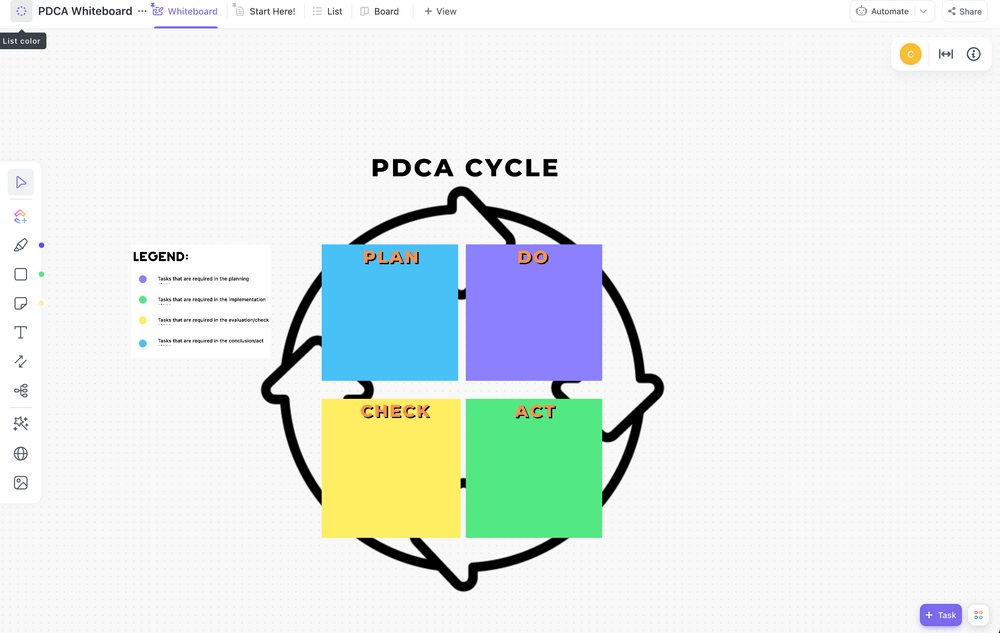
If you’re into quality management, you already know the plan, do, check, and act (PDCA) cycle—or continuous improvement cycle. But this ClickUp PDCA whiteboard template will elevate your PDCA process management plan to a whole other level.
Use it to categorize tasks into the four stages of the PDCA cycle. It might sound silly to do with a template instead of pen and paper but trust us.
This whiteboard template uses business process management software and does more than break down tasks into smaller steps. The PDCA whiteboard supports the execution of PDCA processes for better project management.

With ClickUp’s process document template, documenting business processes got so much easier. Use the template to document standard operating procedures (SOPs), such as the steps to request time off for process improvement.
Because it’s one thing to define the tasks in your workflow, it’s another thing to know exactly what to do to complete the task.
For more try out these process document templates!
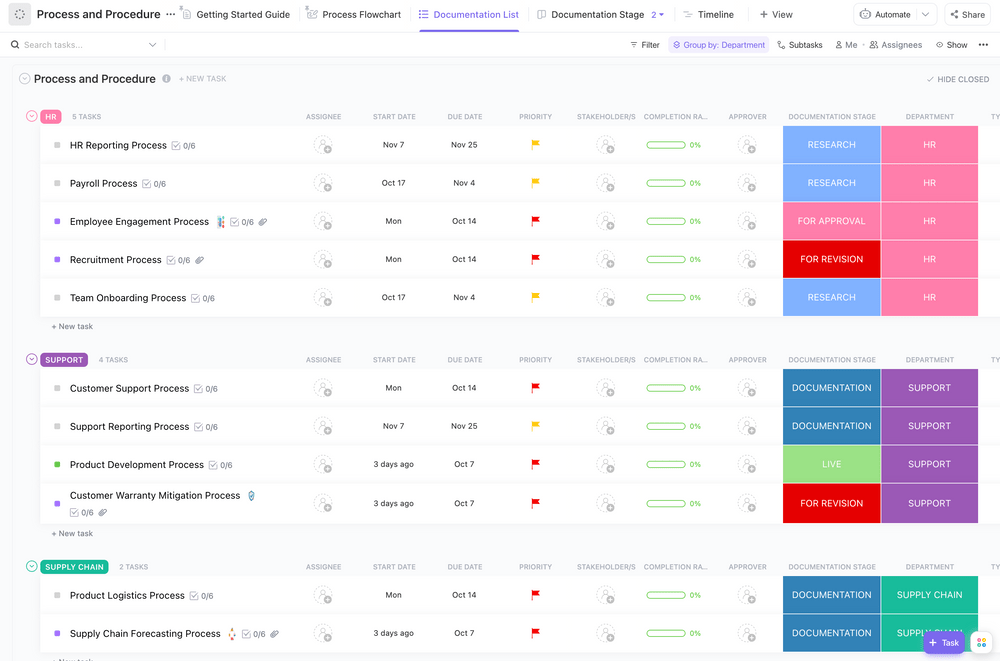
Once your company starts executing business processes with BPM software, use this process and procedures template by ClickUp to get an overview of your internal processes by:
Bonus: SOP software!
A BPM suite—composed of many BPM software options—help you implement all the stages of business process management. So, before we go, let us tell you about a few strong points of BPM and project management tools (such as ClickUp).
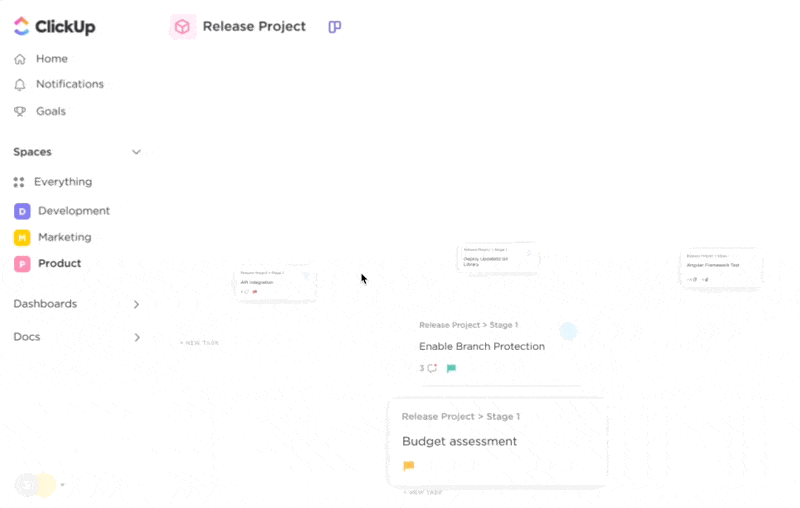
The five stages of business process management are necessary steps toward automation. And BPM tools like ClickUp help you automate tasks and workflows, which is why we want to highlight the benefits of business process automation here:
And usually, you can customize the reports with widgets that inform you of tasks completed, the number of tasks worked on, members with unfinished tasks, time estimates, time tracked, and so many other measures.
Try out ClickUp and drop us a line to say what you think of it. We can’t wait to learn where you need to go with business process management!
© 2025 ClickUp